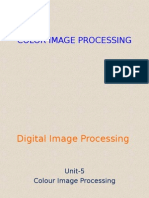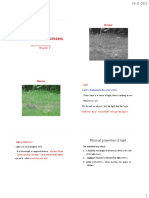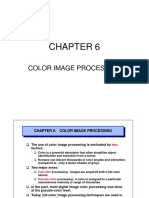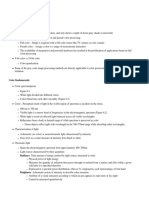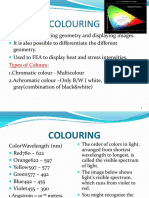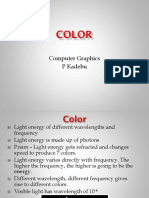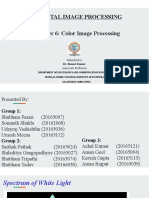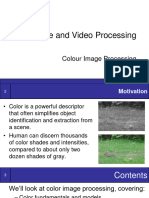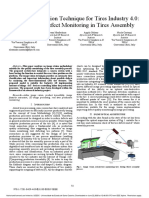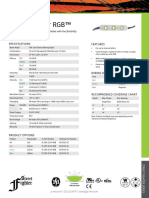0% found this document useful (0 votes)
4 views68 pagesColor Image Processing
Chapter 6 of the document discusses color image processing, emphasizing its importance in object identification and extraction. It covers color fundamentals, various color models (RGB, CMY, HSI), and techniques like pseudo-color image processing and intensity slicing. The chapter highlights how colors are perceived and manipulated in digital image processing, providing a comprehensive overview of the subject.
Uploaded by
Hajer AlatewishCopyright
© © All Rights Reserved
We take content rights seriously. If you suspect this is your content, claim it here.
Available Formats
Download as ODP, PDF, TXT or read online on Scribd
0% found this document useful (0 votes)
4 views68 pagesColor Image Processing
Chapter 6 of the document discusses color image processing, emphasizing its importance in object identification and extraction. It covers color fundamentals, various color models (RGB, CMY, HSI), and techniques like pseudo-color image processing and intensity slicing. The chapter highlights how colors are perceived and manipulated in digital image processing, providing a comprehensive overview of the subject.
Uploaded by
Hajer AlatewishCopyright
© © All Rights Reserved
We take content rights seriously. If you suspect this is your content, claim it here.
Available Formats
Download as ODP, PDF, TXT or read online on Scribd
/ 68



